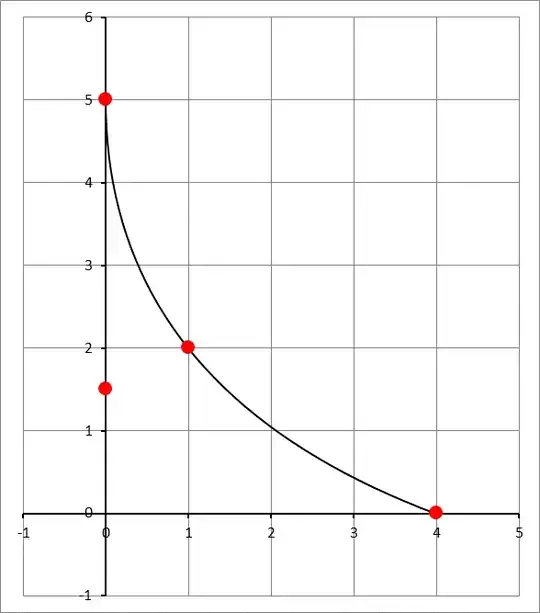Note: Although I want to accomplish this in java, I think the question is more suitable for this site since it is mostly mathematical.
I am in the following scenario. I want to draw a curve and I have the following points:
- The starting point
- The midpoint of the curve
- The end point
And java allows me to create a curve from any of the following:
- an arc with 2 points, the starting angle and the ending angle
- an arc with center, radius, start angle and end angle
- an arc with 3 points and the radius
- Other curves of different types with 1 or 2 "control points", which I see that I do not have.
This Gimp screenshot shows roughly what I'm trying to achieve.
Edit: I clarify that I want to achieve the type of curves or arcs used in perspective to create circles. Next I leave a photo (it does not belong to me) to illustrate:
Edit 2:
One pattern I noticed, is that the curve is "enclosed" in a square formed by the first and last points. Below is a picture of an "ideal" curve:
What formula can I use to calculate any of those things?
Doing research, I found several questions that didn't serve my purpose (both here and on Stack Overflow) or I wasn't able to understand. Among what I found, I saw that you can get the center of an arc with bisectors as it says here, but I don't feel comfortable working with the long equations of the rect.




